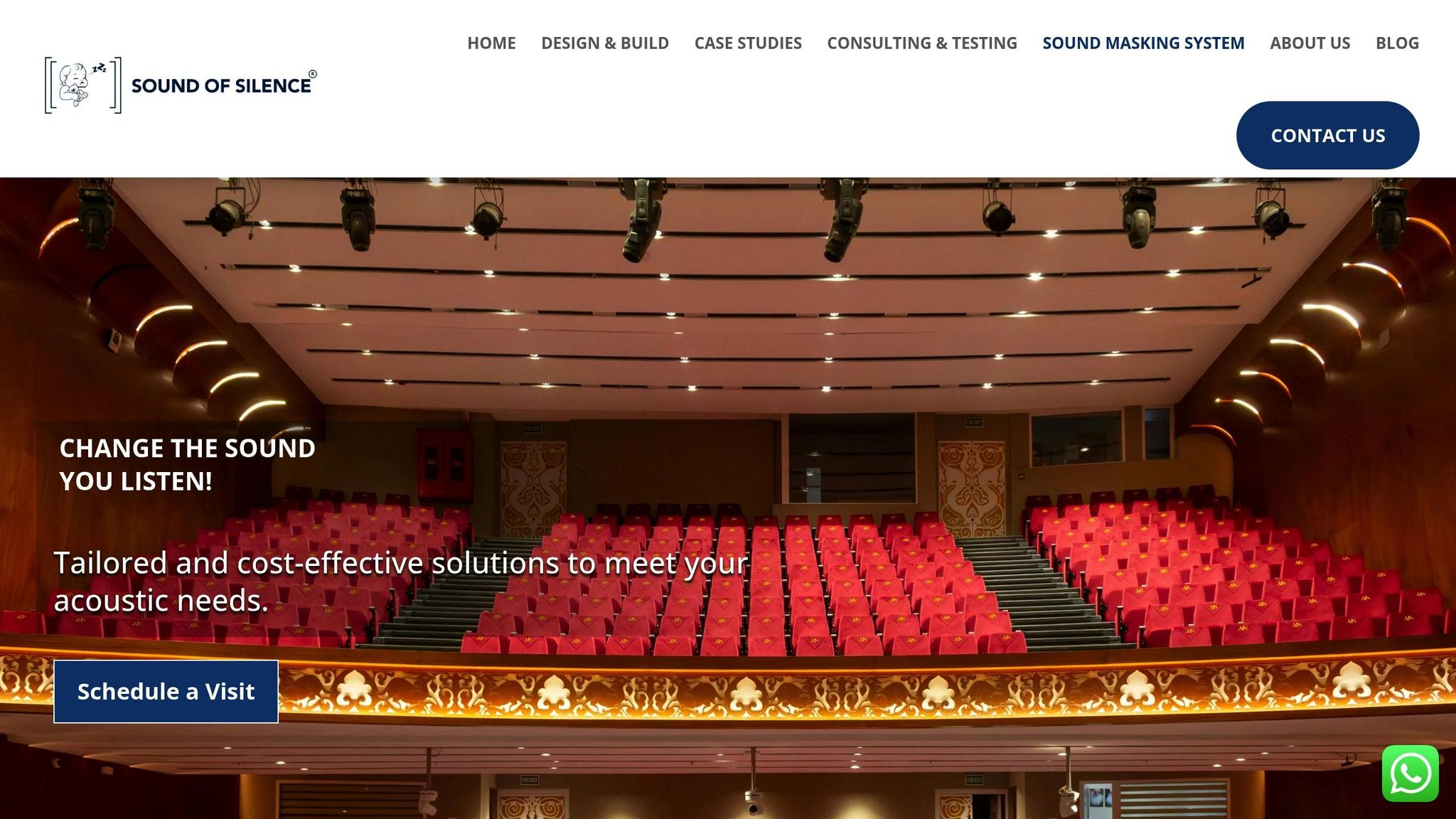Urban retail stores face constant noise challenges, from traffic and construction outside to HVAC systems and customer chatter inside. This noise can shorten customer visits, reduce staff focus, and hurt sales.
To tackle this, here’s what you can do:
- Use soundproofing materials like acoustic panels, double-glazed windows, and impact-absorbing flooring.
- Optimise store layout by creating quiet zones, adding barriers, and using soft furnishings.
- Install sound masking systems to smooth out sudden noise spikes.
- Regularly measure noise levels with sound meters to identify problem areas.
- Consult acoustic experts for tailored solutions and ongoing support.
Reducing noise isn’t just about compliance – it’s about creating a calm, inviting space for customers and staff.
How Do Acoustic Sound Panels Work and Where to Place …
Noise Issues in Urban Retail Stores
Urban retail stores deal with a mix of noise challenges that can disrupt daily operations. Knowing where these noises come from is the first step to addressing the problem.
Common Noise Sources
Noise in urban retail spaces comes from both outside and inside. External noise often includes traffic, construction, and general city sounds, which can seep through the building’s walls and windows.
Inside the store, noise sources include:
- Building Systems: HVAC systems and refrigeration units produce a constant hum.
- Customer Activity: Footsteps, conversations, and shopping trolleys all add to the noise.
- Store Operations: Checkout systems, announcements, and stock handling contribute to the soundscape.
- Background Music: While intended to enhance the atmosphere, it can clash with other noises.
Together, these create a layered and often overwhelming acoustic environment.
Effects on Store Operations
Too much noise in a retail setting can hurt both customer satisfaction and employee efficiency.
| Area of Impact | Effects |
|---|---|
| Customer Experience | Shoppers may spend less time in-store, struggle to communicate with staff, and feel stressed. |
| Staff Wellbeing | Noise can lead to fatigue, make it harder to focus, and increase mistakes. |
| Store Performance | High noise levels can reduce customer engagement, lower sales conversions, and discourage repeat visits. |
The problem becomes especially noticeable during peak times. For example, in city centres, lunch hours often bring heavy traffic noise alongside increased footfall, creating a particularly noisy atmosphere.
The next step is to measure noise levels and identify the specific trouble spots in your store.
Measuring Store Noise Levels
Sound level meters are essential for identifying areas in the store where noise is particularly high. This information helps you decide where to focus efforts to reduce noise.
Noise Level Assessment
Use sound level meters to test noise levels in different sections of the store. These tests can highlight areas with excessive noise. Schedule these assessments regularly and work with acoustic experts to analyse the results. Their advice can help you plan effective noise reduction measures.
Problem Area Detection
Once testing is complete, pinpoint specific areas like entrances or busy sections that consistently show higher noise levels. Direct your noise reduction efforts here to improve the overall shopping experience. Regular follow-up tests allow you to track the effectiveness of your strategies and make adjustments as needed.
sbb-itb-06ab728
Noise Reduction Methods
After assessing noise levels, you can implement specific strategies to tackle excessive sound. Reducing noise in urban retail spaces often involves a mix of physical barriers, thoughtful layouts, and modern technology.
Sound Insulation Options
To minimise noise reflections and block external sounds, consider these insulation methods:
- Install high-density acoustic panels to absorb sound.
- Use double-glazed windows with laminated glass for better noise isolation.
- Opt for impact-absorbing flooring like cork underlayment or rubber matting.
- Add suspended acoustic ceiling tiles to dampen sound.
Store Layout Solutions
A well-planned store layout can help control noise levels. Arrange quiet areas away from high-traffic zones and use displays as barriers to deflect sound. Buffer zones along noisy facades can also help. Incorporate curved pathways to disrupt direct sound travel, and add soft furnishings like rugs or fabric-covered furniture to absorb noise.
Beyond structural changes, technology can further improve your store’s acoustics.
Sound Masking Technology
Sound masking systems introduce a low-level background sound that evens out sudden noise spikes and boosts customer privacy. For best results, work with acoustic specialists to design, calibrate, and maintain these systems.
Professional Acoustic Services
Professional acoustic services can take your noise control efforts to the next level. These experts work alongside your internal measures to provide accurate, long-lasting solutions.
Sound of Silence Solutions

Sound of Silence offers specialised acoustic services designed for urban retail spaces. Their approach focuses on three main areas:
- Perform detailed sound and vibration tests to identify noise sources and how sound travels through your space.
Consulting and Design
- Create customised noise reduction plans, optimise store layouts, and recommend suitable materials and systems.
Implementation and Execution
- Install soundproofing solutions, fine-tune sound masking systems, and carry out post-installation testing to ensure effectiveness.
Why Work with Acoustic Experts?
Partnering with acoustic professionals brings several benefits:
Customised Solutions
Get interventions specifically designed to address your store’s unique noise challenges and layout.
Efficient Budget Use
Avoid expensive mistakes by using expert advice to make the most of your noise reduction budget while meeting local regulations.
Sustained Performance
Professionals offer ongoing support, including monitoring, recalibration, and updates to adapt to changing conditions.
Conclusion
Creating a quieter shopping experience in urban retail stores involves combining several practical solutions. Professional acoustic advice, including sound insulation, improved layouts, and sound masking technology, can help achieve effective noise control.
Sound of Silence offers a thorough approach to ensure retail spaces balance background noise with customer comfort. To manage noise effectively, key actions include:
- Conducting detailed acoustic evaluations
- Applying specific sound reduction techniques
- Consulting with acoustic experts
By following these steps, you can move from identifying noise issues to implementing effective solutions.
Controlling noise isn’t just about lowering decibels – it’s about fostering an atmosphere where customers and staff can communicate clearly, stay focused, and enjoy their time in the store. Expert acoustic solutions can enhance customer satisfaction and improve overall business performance.
As cities grow louder, managing store acoustics becomes increasingly important for retail success. These strategies can help create a quieter and more welcoming shopping environment.

